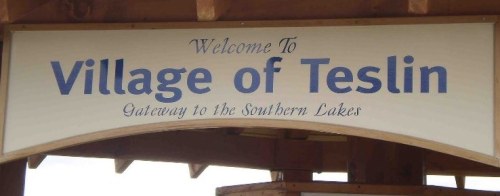A multi-agency model is essential to support both employers and employees to overcome the barriers surrounding disability employment.

KEY CONCEPTS: FASD; readiness-to-work; multi-agency support; education; self-awareness; motivation.
In our previous post regarding the disability employment issues in Teslin, we focussed on the significant concerns arising as a function of Fetal Alcohol Spectrum Disorders (FASD), which is estimated to affect a significant portion of the working population.
Depending on the severity of FASD it has far reaching and lasting implications for people affected, including, cognitive and functional disabilities which can result in poor memory, attention deficits, impulsive behaviours, and poor cause-effect reasoning. Secondary disabilities include increased risk for mental health problems and drug and alcohol addictions.
Specialist disability and FASD supports are available through agencies based in Whitehorse and by way of health and social services centres in communities. However, the connections between these supports and employment services are less clearly defined. The Yukon Disability Employment Strategy is beginning to recognize that this is key area of focus for supporting sustainable community development that includes the increased representation of people with disabilities in the workplace.
Our discussions with employers and agencies in Teslin laid the ground work down for understanding where efforts need to be focussed , but also helped us in understanding the best practice that is presently in place and supporting disabilities employment and community growth.
Firstly, and without taking our focus off the main issue for the community, namely FASD, we must also consider the other disability employment issues identified by stakeholders.
While FASD dominated discussions regarding barriers to employment, chronic illness and injuries were also a significant factor in limiting access to work. These issues tended to be addressed by way of the Yukon Workers Compensation Health and Safety Board (YWCHSB), through what might be considered more standardized methods for addressing identified disabilities issues in the workplace.
Employers identified that they were familiar with the procedures for responding to acquired disabilities in the workplace, inclusive of consultations with the local Health Centre to determine needs and prognosis.
In addition to YWCHSB referrals, one employer indicated they are innovating the human resources procedures to include consultation with medical professionals to advise on adjusting job descriptions in order to retain employees who might not otherwise be able to stay in work due to an acute or chronic disability/injury. The use of professional services to support the development of employment solutions seems an exemplar of how employers might utilize medical consultations for purposes other than simply determining if a given employee can or cannot continue in work as defined by a rigid job specification. This type of consultative model, where medical professionals work cooperatively with employers could extend to include a full range of services, including occupational, physiotherapy, social and mental health services to name a few. This was an exciting innovation, and one that is perhaps worth exploring further as a feature of a YDES.
Returning to the topic of the key disability employment issues for Teslin, which extend to workforce development and sustainable community development planning, employers worryingly identified that it is difficult to recruit staff from the local community in the first instance, partly because the barriers to employment begin with individual readiness-to-work. We have discussed this issue at length in other blog entries, as it appears to be an emerging concerning pattern for businesses. In some case, employers are forced to recruit from outside the local community, in spite of their efforts to find local area candidates to staff their businesses.
Education and training is perhaps as important, if not more important, than ensuring physical, social, emotional and mental health issues are full addressed prior to developing a return to work strategy. Effective education and training programs not only provide the skills and knowledge prospective employees require, but also the confident and self-awareness that enables one to map out ambitious yet realistic goals with a clear progression pathway to achieve personal targets.
Employers and agencies seem to be suggesting that overcoming barriers to employment can sometimes be as much about personal motivation and determination on the part of the employee as it is about the employer being open and responsive to accommodating individual needs over time.

